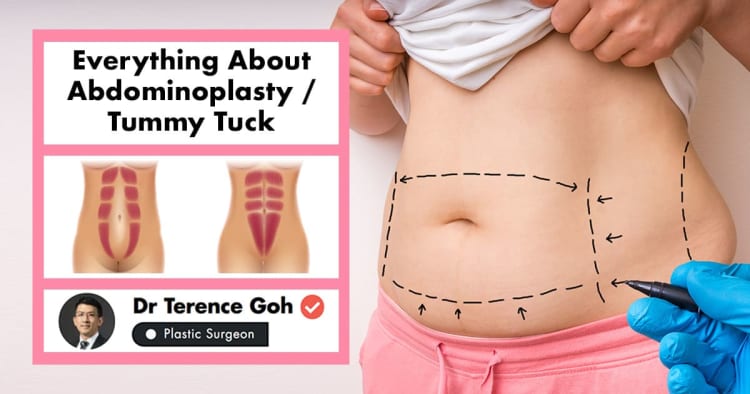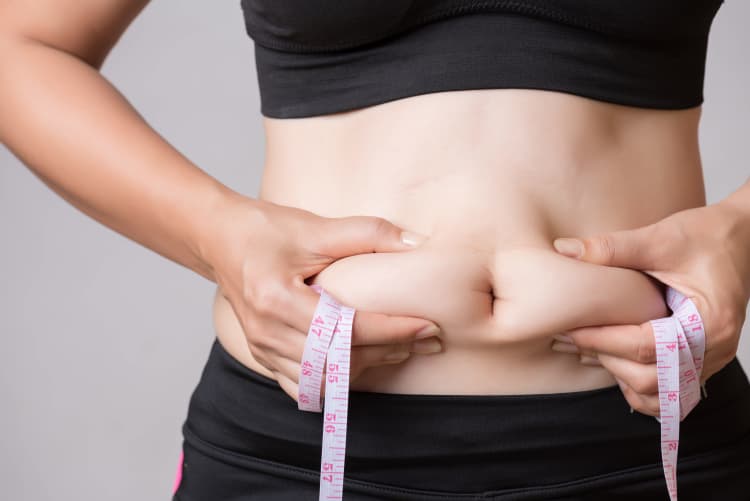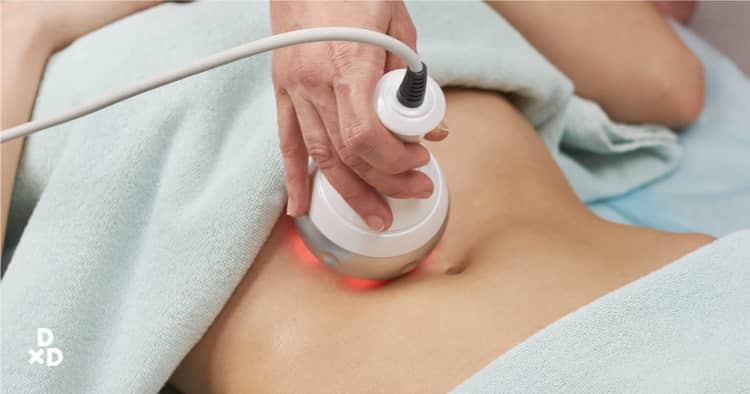Cellulite can be bothersome. Even with lots of working out, it might still not be possible to eliminate that orange peel-looking bumpy fat underneath your skin. If you are looking for treatments to reduce cellulite, this is where you can get all the information that you need!
I am Dr Chin Yee Choong. I am a Dermatologist that practices Aesthetic Medicine. In this article, I will be covering all the information regarding cellulite treatments in Singapore including the types of treatments, cost, and the ways to prevent cellulite.
Note that Aesthetic medicine is not a recognised speciality or subspecialty in Singapore. However, there are guidelines that all doctors Aesthetic-focused medicine follow. [1]
What is cellulite?
Cellulite is a common, harmless skin condition. It causes bumpy lines on the skin that resemble orange peel in certain areas such as the buttocks, thighs, hips, and abdomen. Cellulite is more common in women than in men. [2] There is a validated classification scheme of cellulite, split into 3 categories. [3]
Grade
Clinical characteristics
I
Skin is smooth when standing or lying down, but changes appear during muscle contraction or when the skin is pinched.
II
Skin appears like an ‘orange peel’ that is obvious when standing, without any muscle contraction or skin pinching.
III
Grade II characteristics apply together with raised skin.
What causes cellulite?
There are a lot of factors that contribute to cellulite. Cellulite can form by fat lying underneath your skin, creating the bumpy patterns on affected areas. Cellulite can also occur due to a poor diet choice, slow metabolism, lack of physical activity, the change in your hormones, and even dehydration. Additionally, cellulite severity can be affected by the thickness and colour of your skin. For example, cellulite is more visible on lighter and thinner skin compared to darker and thicker skin.[4]
Who can get cellulite?
Cellulite occurs in 90% of women and 10% of men. Some common factors that affect both genders’ chances of having cellulite are genes, age, and weight. I will discuss age, weight, and why women have cellulite more than men below. Genes can affect your chances of having cellulite. It tends to run in families and there may be no age discrimination, meaning a teenager can have cellulite too.
Why does cellulite form more frequently on women than men?

Women tend to have an increased tendency of forming cellulite because of the following factors:
- Different fat structure. Fat tissue found in women’s bodies is located in chamber-like structures compared to men who have a network of connective fat tissue. These chamber-like structures expand the fat outwards towards the skin, while the connective fat tissue network leads to less protrusions of fat outwards. Women also have thinner skin layers in the thighs and buttocks than men do. [5]
- Hormonal differences between men and women affects fat production. Women have more estrogen, which encourages fat building, compared to men who have more testosterone, which encourages fat breakdown.
- Both men and women have something called an adrenergic receptor. There are two types of this receptor, the alpha receptors and the beta receptors. Alpha receptors lead to fat production, while beta receptors lead to fat loss. Women have 9 alpha receptors for every 1 beta receptor. Compare this to men who have 1 alpha receptor for every 1 alpha receptor and you can start to see why women get cellulite more easily.
Is cellulite only found on overweight individuals?
You will be forgiven for thinking that only overweight individuals get cellulite. If cellulite is a matter of fat on the skin, then the more fat you have the more you will have cellulite! Unfortunately, both skinny and overweight individuals have the possibility of forming cellulite. This is because even though your fat might not have pushed outward enough to form cellulite, your skin can be pushed downward by cords that connect your skin to muscle. While one factor might not be enough, the combined skin tightness and fat movement can lead to cellulite. [6]
Does the frequency of cellulite forming increase with age?
Cellulite becomes more obvious with age. This is because your skin ages because your skin loses elasticity, tightening it. This tightened skin, as explained above, pushes downward against the layer of fat in your body and leads to cellulite.
What are the types of cellulite treatments available in Singapore?

There are treatments such as [7]
- Laser: Laser treatment wounds your skin to reach the underlying fat. This is called ablative laser treatment. There are different kinds of laser treatments that are available now in Singapore. However, if you are undergoing minimally invasive treatment, a tiny laser fibre is inserted beneath the treated area. Then, the laser will break down the fibrous band underneath the skin. This treatment usually lasts up to two years, depending on the kind of treatment that you choose. [8]
- Radiofrequency treatment: If you prefer a non-wounding (non-ablative) method, you can try radiofrequency treatment. Radiofrequency treatment is a non-invasive treatment. The heat from the RF energy will break down fat cells, which will then be eliminated naturally through the lymphatic system which helps remove waste from the body. [9] However, in order for the non-ablative method to work, you need to go through multiple sessions before results show.
- Cryolipolysis: Cryolipolysis or CoolSculpting is a method that reduces the fat content below your skin using a device that freezes the fat. This method is effective in reducing 20% to 25% of fat in the treated areas. However, you need to do multiple sessions in order to see the full result.
During this procedure, a vacuum applicator is placed onto the targeted area, then the cooling panels will freeze the fat. Frozen fat will be eliminated by the body. Generally, it will take you 60 minutes per session. [10]
- Acoustic wave therapy (Shockwave therapy): this method uses a handheld device (transducer) that sends soundwaves to break down the cellulite. A device that emits radial waves is placed onto the affected area. The radial waves will make the fat more permeable and increase blood flow. Then, the fat is drained through the lymphatic system gradually. [11] Like radiofrequency treatment and cryolipolysis, several sessions need to be done in order to get the full result.
- Surgery: Your doctor may offer you surgery to remove fibrous bands under your skin and achieve smoother skin. Liposuction can be one such surgical method. Liposuction works by the surgeon first making an incision on the affected area. Then the fat in the area is loosened with various methods. Next, excess fat will be extracted through a syringe or surgical vacuum, before stitching the incision wound. [12] The result from surgery usually lasts up to three years. However, the risks of this procedure are also greater. For example, there may be fluid accumulation beneath the area, or your skin may be loosened if too much fat is taken out. This can lead to worsening cellulite.
Are there any side effects and downtime after treatment?
There are some side effects of the procedures. For most of the procedures, you will experience swelling, redness, and bruising. There is also minimal downtime, meaning you can return to your activities shortly after treatment. All of the non-surgical treatments are safe and treatment is well tolerated by people of all ages, including the elderly. [13] However, the downtime for surgery is longer as the time after surgery poses a higher risk of complications. These include infection, numbness, contour irregularities, and more.
Who can I see to get Cellulite treated?
Doctors who practice Aesthetic medicine will be well suited to treat you. As Singapore only has guidelines for Aesthetic medicine and does not recognise it as a speciality or subspecialty, you may go to doctors with different titles. You may see a general practitioner who is approved to do certain aesthetic procedures. You may see a dermatologist like me who specialises in skin conditions and is exposed to aesthetic concerns often. Finally, you may see a plastic surgeon to undergo surgery, as described in the types of cellulite treatment available.
How much does each type of treatment option cost?
Laser/Radiofrequency
$100-$200 per session
Cryopolysis
$350-$600 per session
Acoustic wave therapy (shockwave therapy)
$100-$450 per session
Surgery
$3000-$4000
How many sessions do I need to go for until I can see the effects?
Usually, in order to see the full result of the non-invasive and minimally invasive procedures, you have to come for a few sessions. The recommended sessions vary, depending on the procedure that you opt for.
For instance, you are advised to come for 2-3 cryolipolysis sessions for the full result. You also need up to 12 sessions of acoustic wave therapy, depending on the complexity of the cellulite.
How long do the effects last for? Are there ways to prolong its effects?
It is important to remember that results for cellulite treatment are temporary and the effects of each procedure are varied. For laser, radioactive, and acoustic wave therapy treatment, the result can last for 6 months or longer. Cryolipolysis generally lasts for 3 to 4 months and liposuction generally lasts more than 6 months. However, this is only true if you maintain fat loss by eating healthy and working out regularly.
What are some ways to prevent cellulite?
- Body brushing. Body brushing, where you use a stiff, dry hairbrush to exfoliate your skin, helps to increase blood flow and stimulate your lymphatic system, which will reduce cellulite.
- Rub coffee powder on the area. Rubbing coffee can help dilate blood vessels, reducing the appearance of cellulite temporarily.
- Be more active. Walk more, do cardio exercises. While exercise is not the main way of losing fat, it does improve your body’s metabolism and provides many benefits if done often enough.
- Be mindful of your diet. Make sure you drink enough water and consume enough protein.
In conclusion

There are various types of cellulite treatments available in Singapore. However, it is highly recommended that you consult your trusted aesthetic doctor before choosing which type of procedure you head for. Discuss some of the treatments you have seen here and note where you have preferences so that your doctor can give you personalised treatment!














